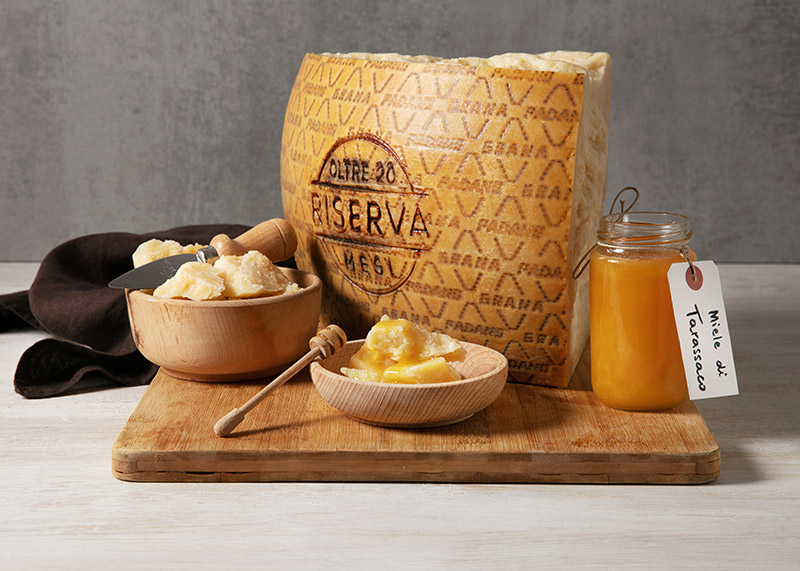
Dandelion honey
Honey
Dandelion honey is made with taraxacum nectar, a green leaved plant which flowers approximately in April and it is very common across Italy, known by a variety of regional names.
It grows at an altitude of up to around 1400 metres with production mainly in the Alpine foothills and the Po river plain, above all in stable meadows where it can grow in large quantities and thus generate the necessary nectar.
Characteristics:
– Colour: amber with yellow highlights in the liquid honey, yellow when crystallised.

– Fragrance: intense with animal, daisy, camomile flower, vinegar, ammonia and cheese rind notes.
– Aroma and flavour: intense with camomile tea and almond pastry aromas, normally sweet. When finely crystallised it leaves a fresh sensation in the mouth.
It is a curious, well balanced pairing, in which the honey’s animal sensations harmonise pleasantly with the vegetable and dried fruit nuances of the Grana Padano. In the mouth its delicate, fresh aromas meld pleasantly with the cheese’s milky notes, accentuating its savouriness.
Serving method:
We always recommend serving an assortment of honeys, perhaps two very different ones, so leaving diners to decide for themselves. Honeys should not be put onto cheese prior to serving both because this does not leave the choice to diners but also because the high osmotic pressure of honey tends to lead to it absorbing the cheese’s salty liquids in the space of just a few minutes. Try the two on their own first before testing the various pairings.
The honeys should be served in small containers, and a teaspoon for serving it. Liquid and creamy honeys can be used as they are. Compact crystallised honeys can be stirred before transferring the honey from the jar to the serving container to make them easier to serve, scraping off the required quantity.”
It is difficult to source at large scale retailers but can be bought locally. Where dandelion is not present in sufficient quantities, or sufficiently exclusively, bees frequently gather nectar from other plants flowering at the same time, such as wild plums, apples and cherries. In some regions with especially large quantities of apples, honeys with a dual name are often made: apple and dandelion honey.
Curious facts
It is difficult to source at large scale retailers but can be bought locally. Where dandelion is not present in sufficient quantities, or sufficiently exclusively, bees frequently gather nectar from other plants flowering at the same time, such as wild plums, apples and cherries. In some regions with especially large quantities of apples, honeys with a dual name are often made: apple and dandelion honey.
